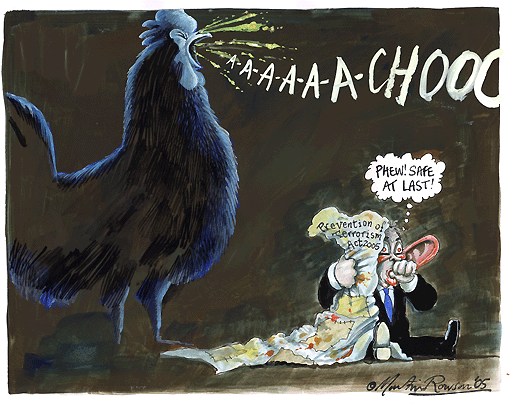In a 2005 analysis of a potential bioterror attack on the food supply involving a botulinum toxin release into the milk supply, the authors recommended adopting a toxin inactivation step during milk processing. In response, some dairy processors increased the times and temperatures of pasteurization well above the legal minimum for high temperature, short time pasteurization (72°C for 15 s), with unknown implications for public health.
 The present study was conducted to determine whether an increase in high temperature, short time pasteurization temperature would affect the growth of Listeria monocytogenes, a potentially lethal foodborne pathogen normally eliminated with proper pasteurization but of concern when milk is contaminated postpasteurization. L. monocytogenes growth during refrigerated storage was higher in milk pasteurized at 82°C than in milk pasteurized at 72°C. Specifically, the time lag before exponential growth was decreased and the maximum population density was increased. The public health impact of this change in pasteurization was evaluated using a quantitative microbial risk assessment of deaths from listeriosis attributable to consumption of pasteurized fluid milk that was contaminated postprocessing. Conservative estimates of the effect of pasteurizing all fluid milk at 82°C rather than 72°C are that annual listeriosis deaths from consumption of this milk would increase from 18 to 670, a 38-fold increase (8.7- to 96-fold increase, 5th and 95th percentiles). These results exemplify a situation in which response to a rare bioterror threat may have the unintended consequence of putting the public at increased risk of a known, yet severe harm and illustrate the need for a paradigm shift toward multioutcome risk benefit analyses when proposing changes to established food safety practices.
The present study was conducted to determine whether an increase in high temperature, short time pasteurization temperature would affect the growth of Listeria monocytogenes, a potentially lethal foodborne pathogen normally eliminated with proper pasteurization but of concern when milk is contaminated postpasteurization. L. monocytogenes growth during refrigerated storage was higher in milk pasteurized at 82°C than in milk pasteurized at 72°C. Specifically, the time lag before exponential growth was decreased and the maximum population density was increased. The public health impact of this change in pasteurization was evaluated using a quantitative microbial risk assessment of deaths from listeriosis attributable to consumption of pasteurized fluid milk that was contaminated postprocessing. Conservative estimates of the effect of pasteurizing all fluid milk at 82°C rather than 72°C are that annual listeriosis deaths from consumption of this milk would increase from 18 to 670, a 38-fold increase (8.7- to 96-fold increase, 5th and 95th percentiles). These results exemplify a situation in which response to a rare bioterror threat may have the unintended consequence of putting the public at increased risk of a known, yet severe harm and illustrate the need for a paradigm shift toward multioutcome risk benefit analyses when proposing changes to established food safety practices.
Journal of Food Protection®, Number 5, May 2014, pp. 696-863 , pp. 696-712(17)
Stasiewicz, Matthew J.1; Martin, Nicole2; Laue, Shelley2; Gröhn, Yrjo T.3; Boor, Kathryn J.2; Wiedmann, Martin2

 ’m a small adult and I was a small child. One day at my babysitter’s house when I was somewhere shy of five-years-old, I slipped off the seat, sank into the toilet bowl, and cried and screamed until the sitter, Mrs. Anderson, came and saved me and my soaking wet shirttail. That’s what this picture that Katie sent us made me remember. Thank you, Katie.
’m a small adult and I was a small child. One day at my babysitter’s house when I was somewhere shy of five-years-old, I slipped off the seat, sank into the toilet bowl, and cried and screamed until the sitter, Mrs. Anderson, came and saved me and my soaking wet shirttail. That’s what this picture that Katie sent us made me remember. Thank you, Katie. A U.S. State Department spokeswoman, Susan Stahl, denied Dr Supari’s claim that Indonesian virus samples had been sent to a biological weapons laboratory in Los Alamos. The laboratory possessed no bird flu viruses from Indonesia or elsewhere.
A U.S. State Department spokeswoman, Susan Stahl, denied Dr Supari’s claim that Indonesian virus samples had been sent to a biological weapons laboratory in Los Alamos. The laboratory possessed no bird flu viruses from Indonesia or elsewhere.